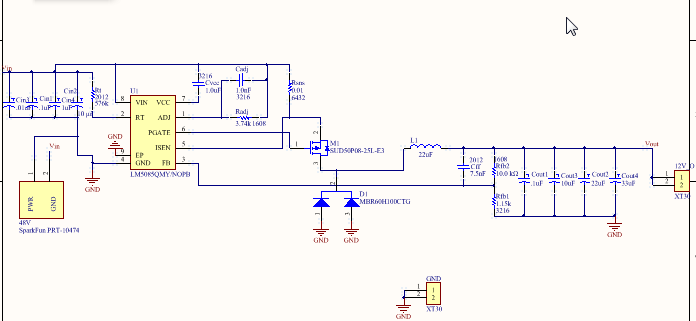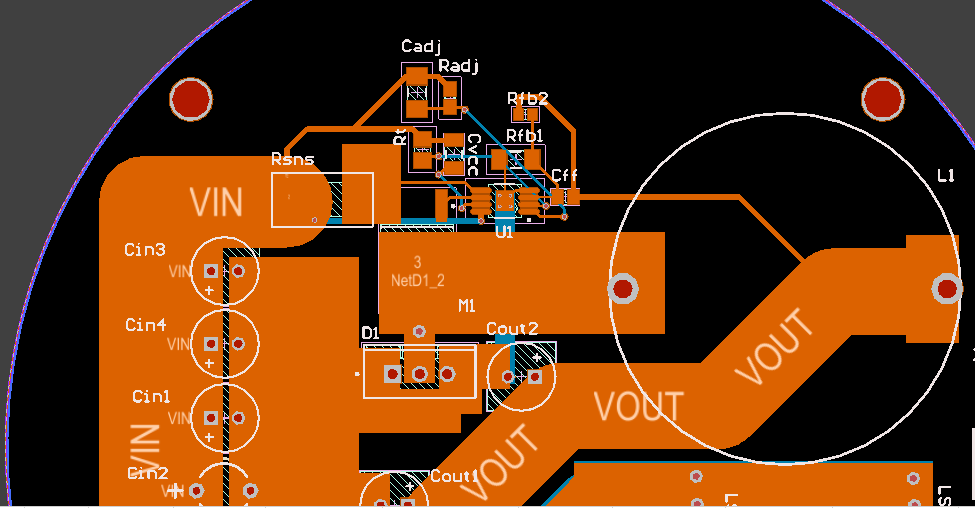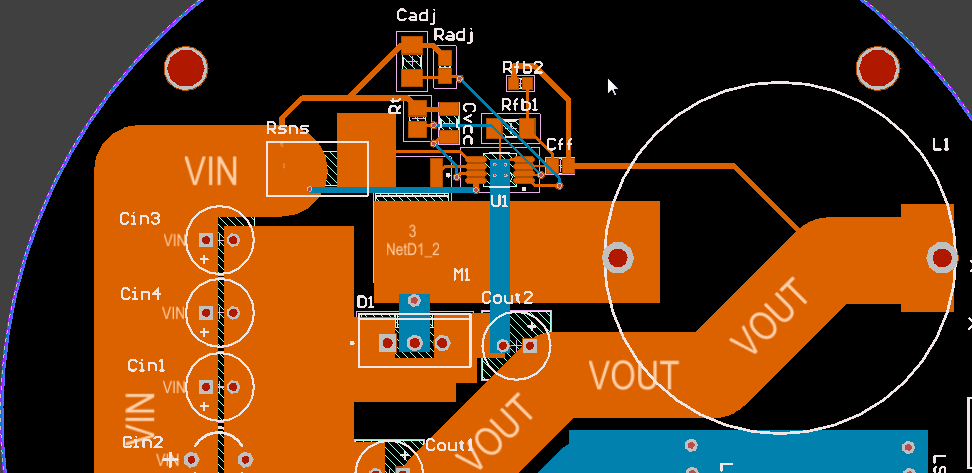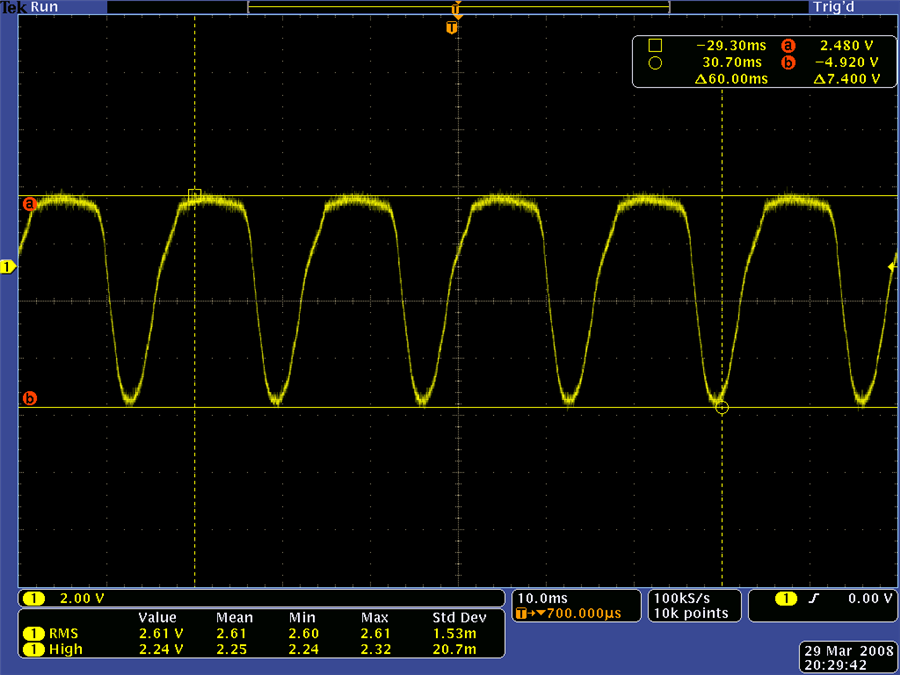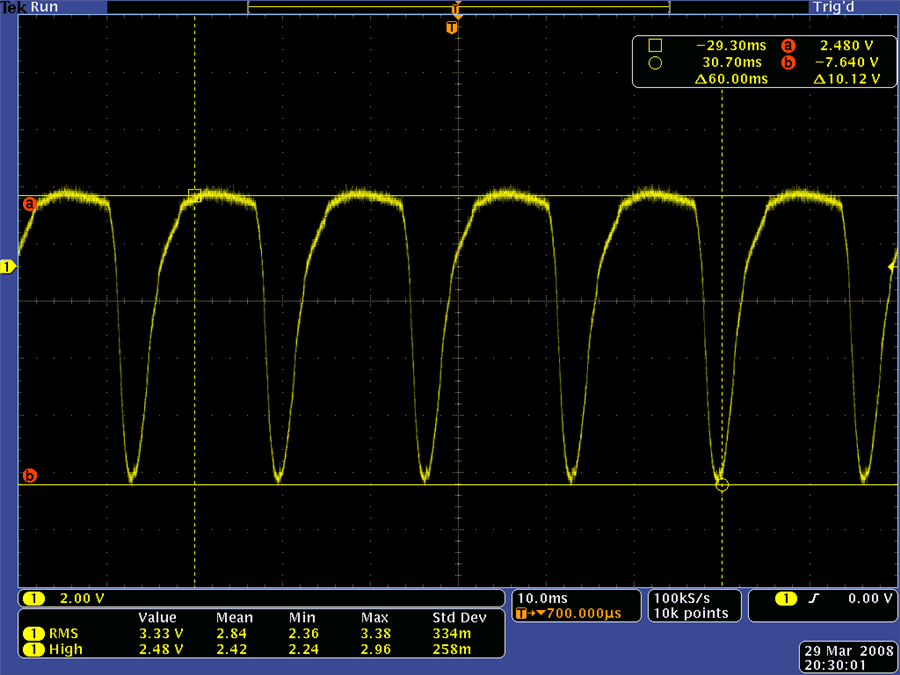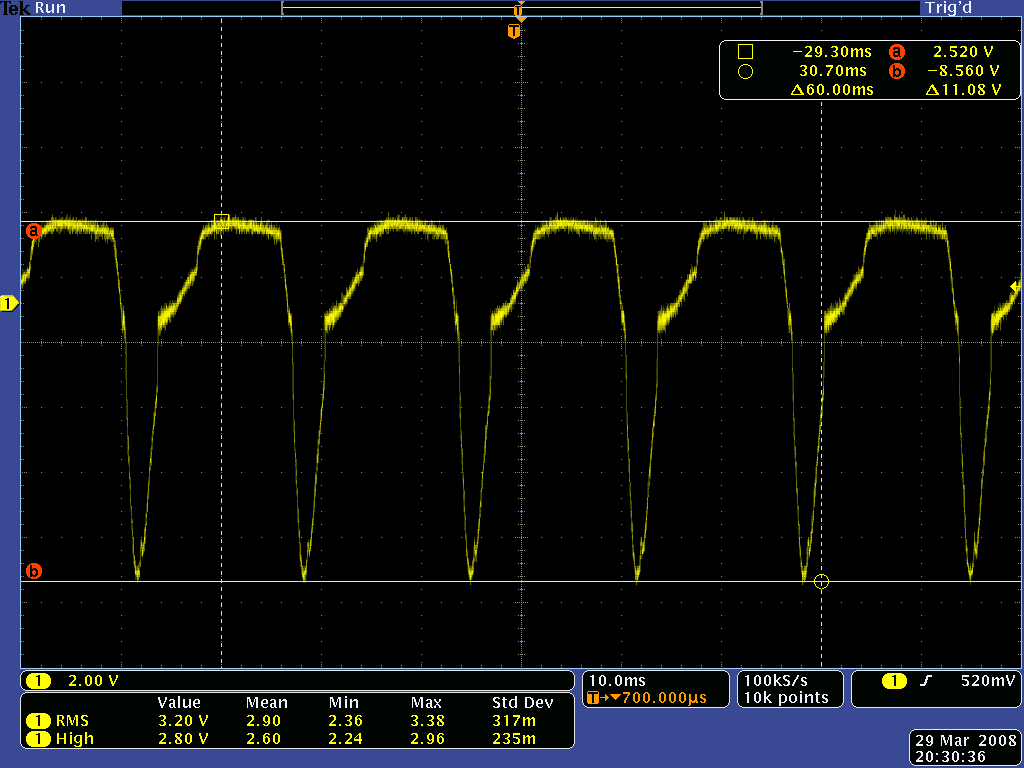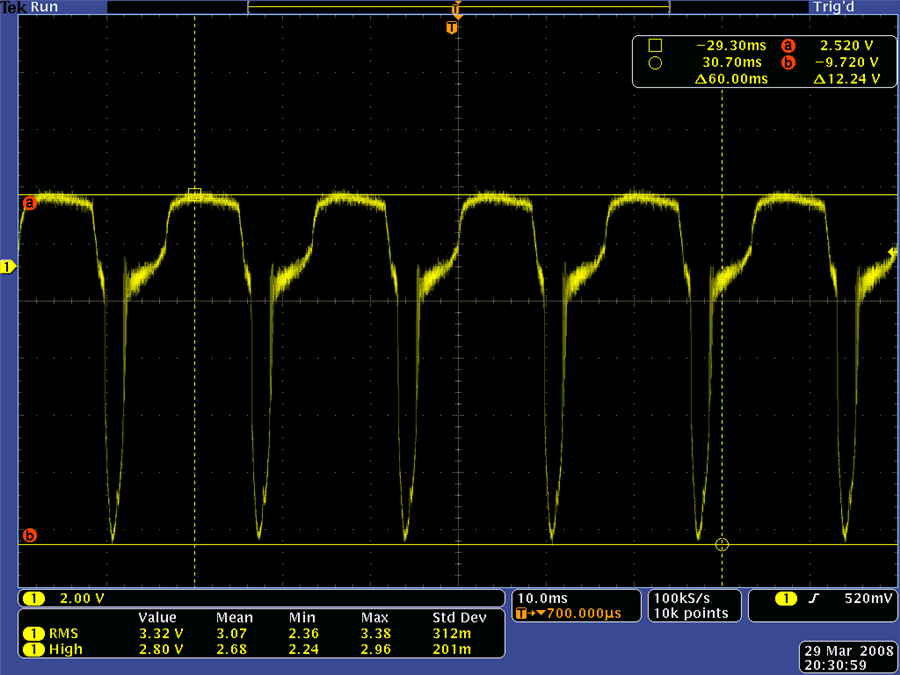Other Parts Discussed in Thread: LM5146, LM5145
Hey E2E,
I am using the LM5085 in a 48V -> 12V @ 10A application. I am using a Webench design which has been slightly modified to fit my spec. (Webench schematic can be found here)
Vin: 48 - 55V
Vout: 12V (+-.2V)
Iout: 10A (roughly)
I was able to create a crude prototype on a breadboard using an SMT breakout PCB that was able to output 12V from 55V with no issues. I then put the design onto a PCB and manufactured it. After trying to test it with 48V however, I only saw 48V on the output (this was a no-load condition). After probing around the board the P MOSFET was discovered to be dead (Gate, Drain, and Source were all shorted to each other). I'm not sure what could have caused this. I replaced the MOSFET to see if that would fix the issue (could be just bad luck), but the issue persisted.
Some other notes: I tried applying 15V just to see if it was a fatal design flaw at all voltages but the board was able to output 2.4V (meaning at least something was getting converted). No load was shown to be drawn at this voltage (meaning it's not an internal short anywhere). It also appears to not have affected any other component on the board (diodes, inductor, LM5085, and anything else on the current loop seem to be fine). Finally, I did not put as much capacitance on the output/input side of the board as stated in the schematic. My thought was that more capacitors could be added on once I started doing load tests.
My guess is something is wrong with my choice of MOSFET, the SUD50P08-25L, but the specs on this indicate it should be fine for this application (-80V VDS max, +-20V VGS max). Below are my schematics as well as the board layout.
The connectors are cut off from the PCB views, but they aren't relevant to the problem (just XT60/XT30 connectors). The project is also available on CircuitMaker if an in depth view is needed.
Any help/guidance is appreciated,
Thanks!


